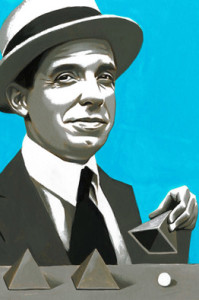Great swindles used to have a face or at least a name to vilify. By contrast, our current financial scandals seem diffuse, transnational and as incomprehensible as their acronyms. Libor, ISDAfix and now HFT, or high-frequency trading—all were once regarded as harmless instruments that facilitated the movement of capital. But there was more to them than met the eye. As the best-selling financial writer Michael Lewis, author of the recently published “Flash Boys,” recently said on “60 Minutes,” “The United States stock market, the most iconic market in global capitalism, is rigged.”
Though computers have increasingly replaced humans and business methods have grown more arcane, what links today’s scandals with those of yesteryear is the hypnotizing power of confidence. Violence can force people to act against their instincts, but only confidence can make us override them. Charles Ponzi, whose fraudulent postal-coupon scam in 1919 gave rise to the term “Ponzi scheme,” exuded such confidence that he was still able to attract investors even after he brought down six banks, lost about $20 million and spent 3½ years in prison.






